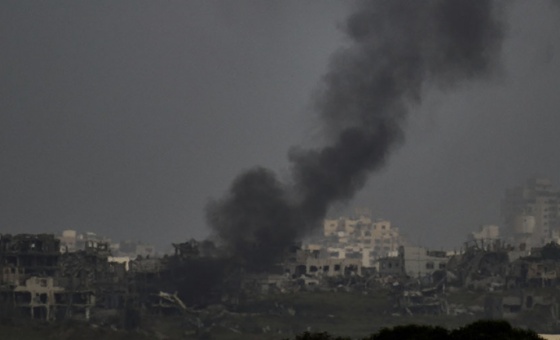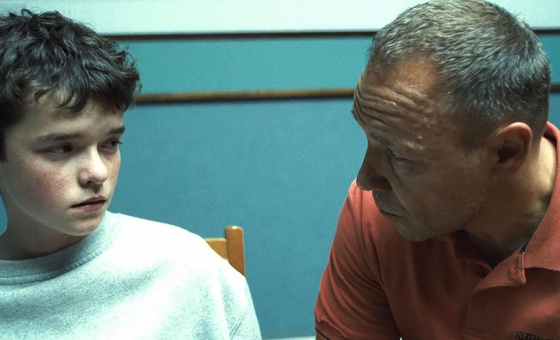×
This is the last article you can read this month
You can read more article this month
You can read more articles this month
Sorry your limit is up for this month
Reset on:
Please help support the Morning Star by subscribing here
One of the largest demonstrations ever seen in Glasgow took place a 100 years ago towards the end of 1915.
Willie Gallacher, who would later become a Communist MP, caught the mood beautifully. He called the huge protest of thousands of rent striking housewives accompanied by shipyard and engineering workers “Mrs Barbour’s Army.”
So who was this Mrs Barbour whose army had converged on the sheriff’s courts in the centre of Glasgow a century ago this week?
Mary Barbour was born on February 22 1875 in Kilbarchan in Renfrewshire, the third of seven children born to carpet weaver James Rough and his wife Jane Gavin. When the family moved to Elderslie in 1887, Mary herself began work in the carpet mills.
In 1896 she married David Barbour and they settled in Govan beside the Clyde near Glasgow. Mary joined the Kinning Park Co-operative Guild — at the time the first co-operative guild in Scotland — and it was here her political education started.
She joined the Independent Labour Party and became active in the socialist Sunday school movement.
In early 1914, despite the “all in this together” attitude of WWI, landlords increased rents steeply. Landlords it seems haven’t changed much in a 100 years.
Women’s Labour League president Mary Laird formed the Glasgow Women’s Housing Association and in Govan in June 1915 the first signs of really militant resistance arose, led by Mary Barbour. She formed the South Govan Women’s Housing Association.
As a working-class and working woman with two sons and a husband in the shipyards, she was deeply involved in local working-class struggle.
This was at a time when Clydebank was seen as a hotbed of socialist ideas and protest — Glaswegians were not afraid to protest against the jingoism of WWI.
In June 1916 another rent strike leader, Helen Crawfurd, launched the Women’s Peace Crusade to oppose the war.
Many of the leading figures of what was called Red Clydeside were women — as well as Mary Barbour there were Agnes Dollen, Crawfurd and Jessie Stephens.
Male leaders included John Maclean, Willie Gallacher and David Kirkwood.
Mary Barbour’s Army was actively involved in organising tenant committees and local resistance to sheriff seizures and forced evictions.
The rent strike quickly spread all over Glasgow, where 25,000 households refused to pay rent and hundreds of people turned out to stop evictions.
In panic David Lloyd George’s government quickly passed the Rent Restrictions Act of 1915. This Act helped improve the legal position of working-class tenants throughout Britain in their dealings with private landlords.
Barbour’s contribution to the strikes encouraged her involvement in Red Clydeside Glasgow politics — and what politics!
On January 31 1919 a massive rally was held in George Square, in the heart of Glasgow — 90,000 women and men filled the square to support the campaign for a 40-hour week and better conditions for workers.
The red flag was raised in the crowd, the police read the Riot Act and tanks and soldiers were brought in as the government feared the protests would turn to a Bolshevik revolution.
The leaders of the strike were arrested and charged with “instigating and inciting large crowds of persons to form part of a riotous mob.” Gallacher was sentenced to five months in jail.
In 1920 Barbour stood for Labour and won in the municipal elections for Fairfield ward in Govan.
Sadly she was not a candidate in the 1922 general election when a number of male Red Clydesiders, including David Kirkwood, James Maxton, John Wheatley and Manny Shinwell were elected to the House of Commons.
Willie Gallacher would be elected as Communist MP for West Fife, but not until 1935.
Barbour went on to build a huge reputation as one of Labour’s first female councillors in Glasgow. She campaigned for the introduction of municipal banks, wash-houses, laundries and baths, free milk for schoolchildren, child welfare centres and play areas, home help and pensions for mothers.
From 1924 until 1927 she served as the first woman bailie — the Scottish equivalent of an alderman — on Glasgow Corporation and was appointed one of Glasgow’s first female magistrates.
Barbour pioneered the city’s first family planning centre — the Women’s Welfare and Advisory Clinic — in 1925 and also chaired its first committee, raising sufficient funds to employ female doctors and nurses.
She continued as a councillor until 1931. After retiring from council work she still continued her activities on a range of housing, welfare and co-operative committees. She organised seaside outings for the children of poor families in Glasgow.
Mary Barbour died on April 2 1958 aged 83. She is not forgotten and the spirit of her wonderful army still marches through Glasgow’s streets beside the Clyde.







